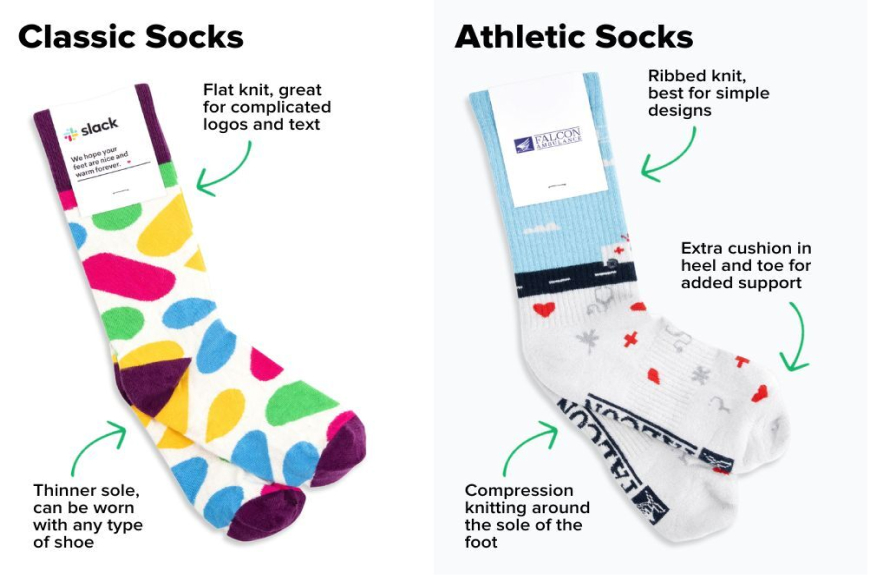Understanding Compression Socks
Compression socks are specially designed hosiery that apply graduated pressure to the legs, with the highest level of compression at the ankle and gradually decreasing up the leg. They are commonly used to improve blood circulation, reduce swelling, and alleviate discomfort in the legs and feet. Compression socks come in various styles, lengths, and levels of compression to suit different needs and preferences.
Importance of Proper Fit
Achieving the correct fit is crucial when it comes to compression socks. Socks that are too loose will not provide the intended benefits, while socks that are too tight can cause discomfort, restrict blood flow, and potentially lead to other health issues. Understanding how to determine the right level of tightness is essential for maximizing the effectiveness of compression socks and avoiding any potential risks.
How to Determine the Correct Tightness
The ideal tightness of compression socks depends on several factors, including the individual's specific needs, medical conditions, and personal preferences. Compression levels are typically measured in millimeters of mercury (mmHg) and range from mild (8-15 mmHg) to extra firm (30-40 mmHg). It's important to consult with a healthcare professional or refer to the manufacturer's sizing chart to determine the appropriate level of compression for your needs. A good rule of thumb is that the socks should feel snug and supportive but not uncomfortably tight or painful to wear.
Measuring Your Legs for Compression Socks
To ensure a proper fit, it's essential to measure your legs accurately before purchasing compression socks. Measurements are typically taken at the ankle, calf, and thigh, depending on the length of the socks. Follow the manufacturer's instructions carefully and use a flexible measuring tape to obtain precise measurements. Keep in mind that sizing can vary between brands, so always refer to the specific sizing chart provided by the manufacturer. If you're unsure about your measurements or have any concerns, consider seeking assistance from a healthcare professional experienced in fitting compression socks.
Benefits of Properly Fitting Compression Socks
When compression socks fit correctly, they can provide numerous benefits, such as improved blood circulation, reduced swelling and inflammation, alleviated leg fatigue and heaviness, and prevention of venous disorders like deep vein thrombosis (DVT) and varicose veins. Well-fitting compression socks can also aid in post-surgical recovery, enhance athletic performance, and promote overall leg comfort during prolonged periods of sitting or standing.
Potential Risks of Incorrect Tightness
On the other hand, wearing compression socks that are too tight can lead to several issues. Overly tight socks may cause skin irritation, chafing, or even cut off circulation, leading to numbness, tingling, or discoloration in the toes or feet. In severe cases, excessively tight compression socks can contribute to the development of pressure ulcers or aggravate existing medical conditions. If you experience persistent discomfort, pain, or any concerning symptoms while wearing compression socks, discontinue use and consult a healthcare professional promptly.
Tips for Buying Compression Socks
When shopping for compression socks, consider the following tips to ensure a comfortable and effective fit:
1. Choose the appropriate compression level based on your needs and healthcare provider's recommendations.
2. Refer to the manufacturer's sizing chart and measure your legs accurately for the best fit. You can also refer to this article to learn more about how to tell if your compression socks are too tight.
3. Select a reputable brand known for quality materials and consistent sizing.
4. Consider the length of the socks (knee-high, thigh-high, or pantyhose) based on your preferences and the area requiring compression.
If you're looking for a versatile option, consider custom cotton athletic crew socks that offer comfortable compression without being overly tight.
Frequently Asked Questions
Q: How do I put on compression socks?
A: Putting on compression socks can be a bit tricky, but with practice, it becomes easier. Start by turning the sock inside out, placing your toes in the toe area, and gradually rolling the sock up your leg. Avoid pulling the socks up by the top, as this can cause them to stretch out or tear. For a step-by-step guide, check out this article on putting on compression socks.
Q: Can I wear compression socks all day?
A: Yes, compression socks can be worn all day, especially if you have a medical condition that requires consistent compression. However, it's essential to remove them before bed to allow your skin to breathe and prevent any potential irritation.
When to Consult a Healthcare Professional
If you have any underlying medical conditions, such as diabetes, peripheral artery disease, or severe venous insufficiency, it's crucial to consult a healthcare professional before using compression socks. They can provide personalized advice on the appropriate compression level and ensure that the socks won't interfere with your current treatment plan. Additionally, if you experience persistent discomfort, pain, or any concerning symptoms while wearing compression socks, don't hesitate to seek medical advice to rule out any potential complications.


